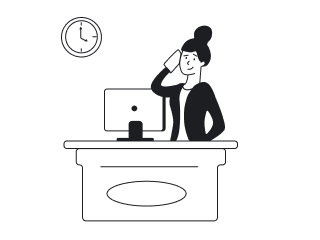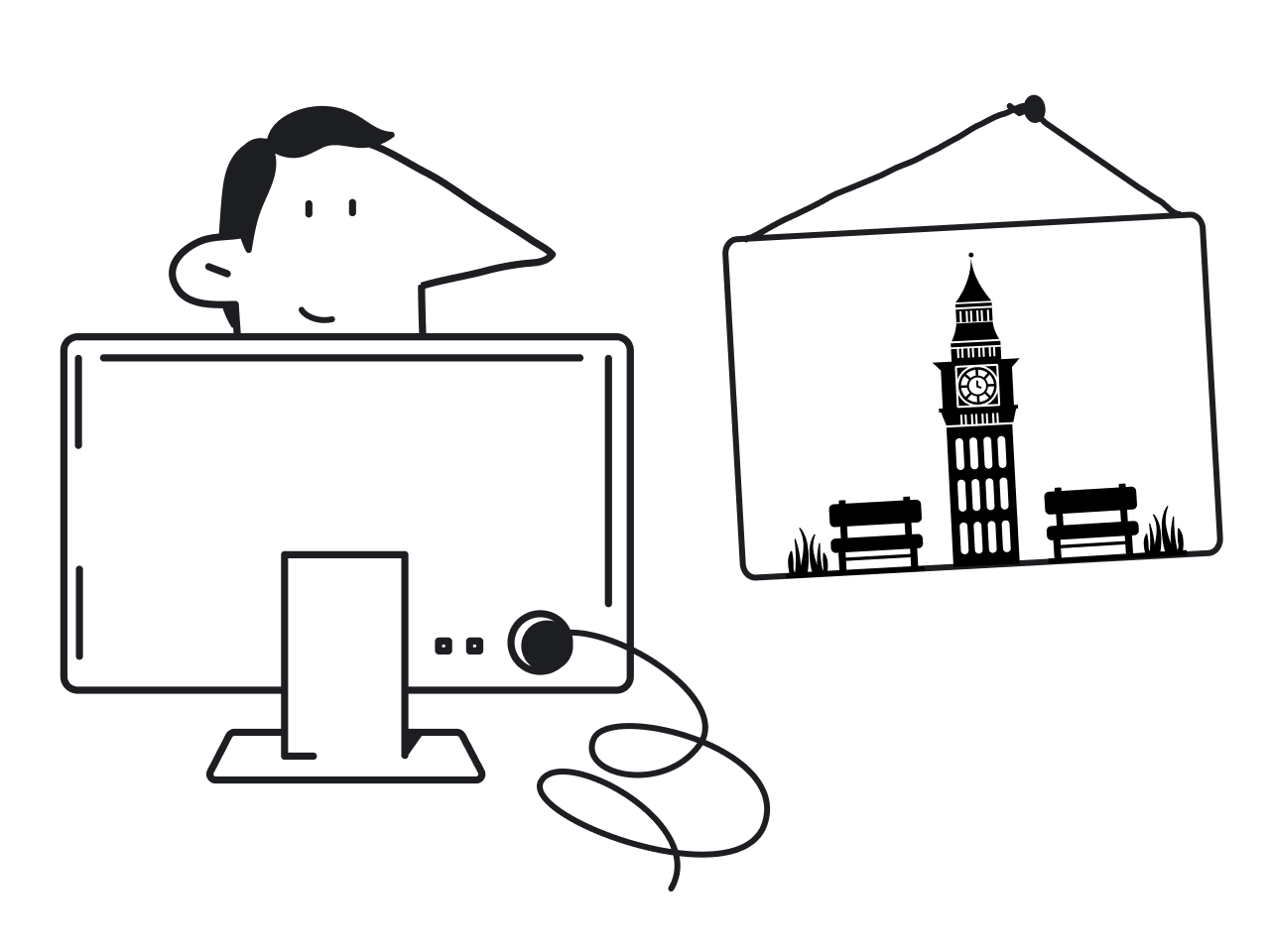San Francisco is where design stops being decoration and becomes a core part of a company’s growth engine.
It’s not unusual for a startup here to have more designers than marketers. Investors expect great UX. Users demand it. Founders know that a confusing interface can kill conversions faster than a pricing page typo.
Yet, almost every UI/UX design agency in San Francisco sounds the same.
They all have sleek websites. They all promise to be “user-centered.” Most of them are. But if you’re trying to pick one, it’s hard to see through the portfolio polish.
So let’s fix that.
This guide skips the sales talk and provides you with the key information when choosing a UX design agency, San Francisco.
Let’s take a look at the best UX design agencies, organized by their areas of expertise.
1. Eleken
Best for SaaS companies that need consistent, scalable UX/UI design and niche expertise, such as geoservice, data, and AI
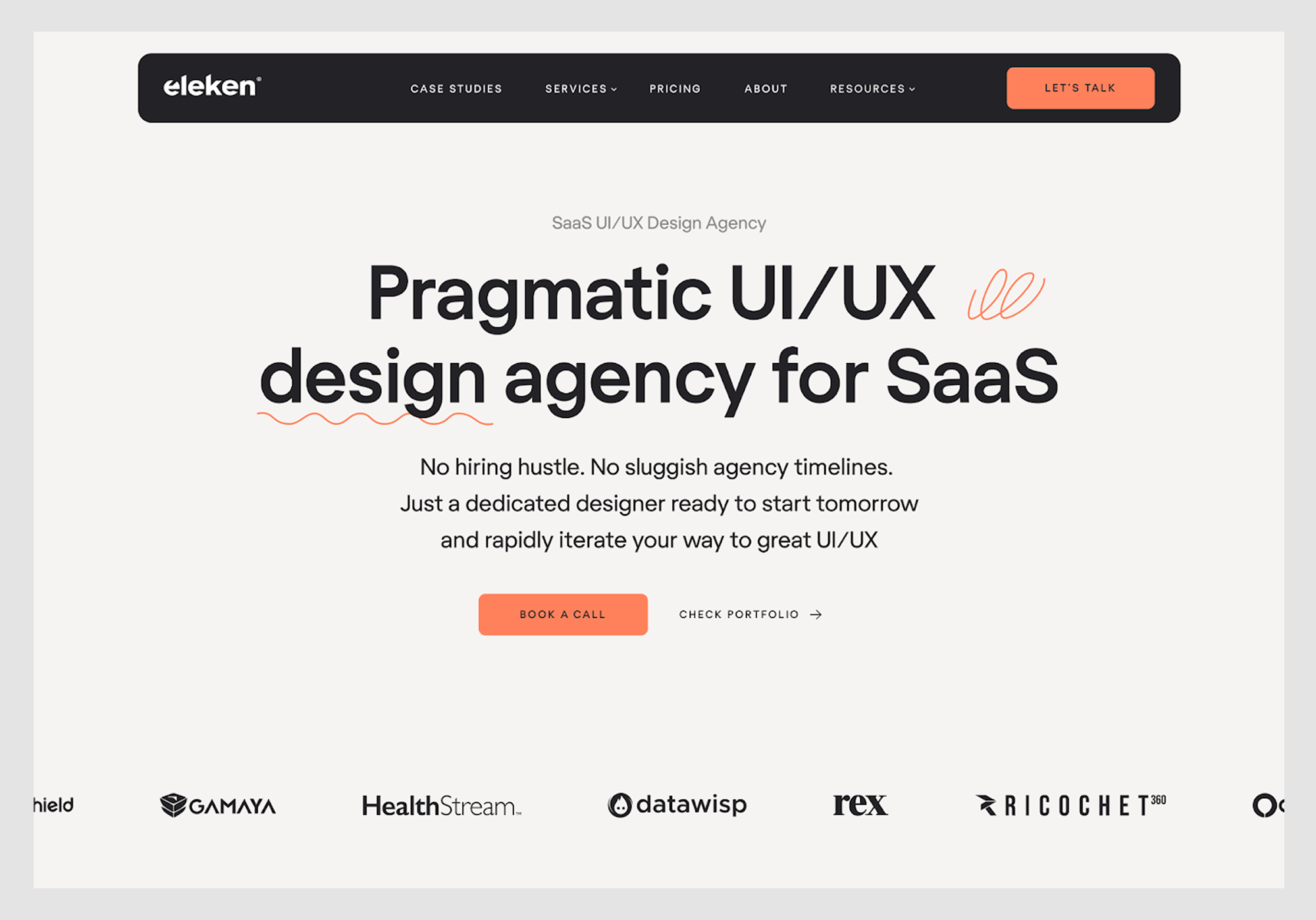
Eleken is a distributed team, originated in Kyiv, Ukraine, but they’ve partnered with plenty of product teams in the Bay Area. And it shows. Their designers speak fluent SaaS, ask the right product questions, and start moving fast without layers of overhead.
You won’t get a bloated discovery doc or a “strategy phase” that eats your first month’s budget. You’ll get a designer embedded in your team, delivering clean, functional UX that’s built to ship.
Services: UX/UI design for SaaS, product redesign, UX audit, legacy app redesign, user flows, app design, onboarding, design systems
Budget fit: Monthly flat rate, no hourly guessing or add-on fees
Collaboration style: Async-first, no PM layer, direct access to your designer
Team size: 100+ product designers
Eleken holds a 4.9-star rating on Clutch, with 111+ reviews from SaaS founders and product leads. Notable clients include Datawisp, Prift, Gamaya, Frontend AI, and Habstash.

Clients highlight their speed, ownership, and ability to navigate ambiguous specifications, especially in fast-paced environments.
.png)
Want a deeper look into the role of UX designers? Check out this video:
Strong points
✔️ SaaS-only focus, deep understanding of dashboards, flows, and feature UX.
✔️ Embedded model when you skip the middlemen and work directly with designers.
✔️ Design handoff when developers get everything they need to build without friction.
✔️ Free design trial when you can try before you commit (rare for top UX design agencies).
Weak points
– No in-house development. Eleken focuses purely on UX/UI, so you’ll need development support lined up.
What makes them different:
- Subscription pricing = predictable costs and a fixed fee.
- Niche expertise: geospatial data products, AI, UI/UX design for developers.
2. Neuron
Best for B2B SaaS and digital platforms

Neuron is a San Francisco-based UX design consultancy focused on complex digital products, especially in SaaS, B2B, and enterprise environments. They’re known for simplifying dense interfaces and helping teams translate vague requirements into clear, usable systems.
You won’t get visual gimmicks or brand workshops. You’ll get clean, strategic UX that’s grounded in user behavior and product goals.
Services: UX/UI design, product strategy, interaction design
Budget fit: $25K–$100K+, depending on scope
Collaboration style: Research-led, works closely with internal teams
Team size: 10–49
Neuron holds a 4.9-star rating on Clutch, with clients consistently praising their clarity, professionalism, and ability to make sense of messy product challenges.
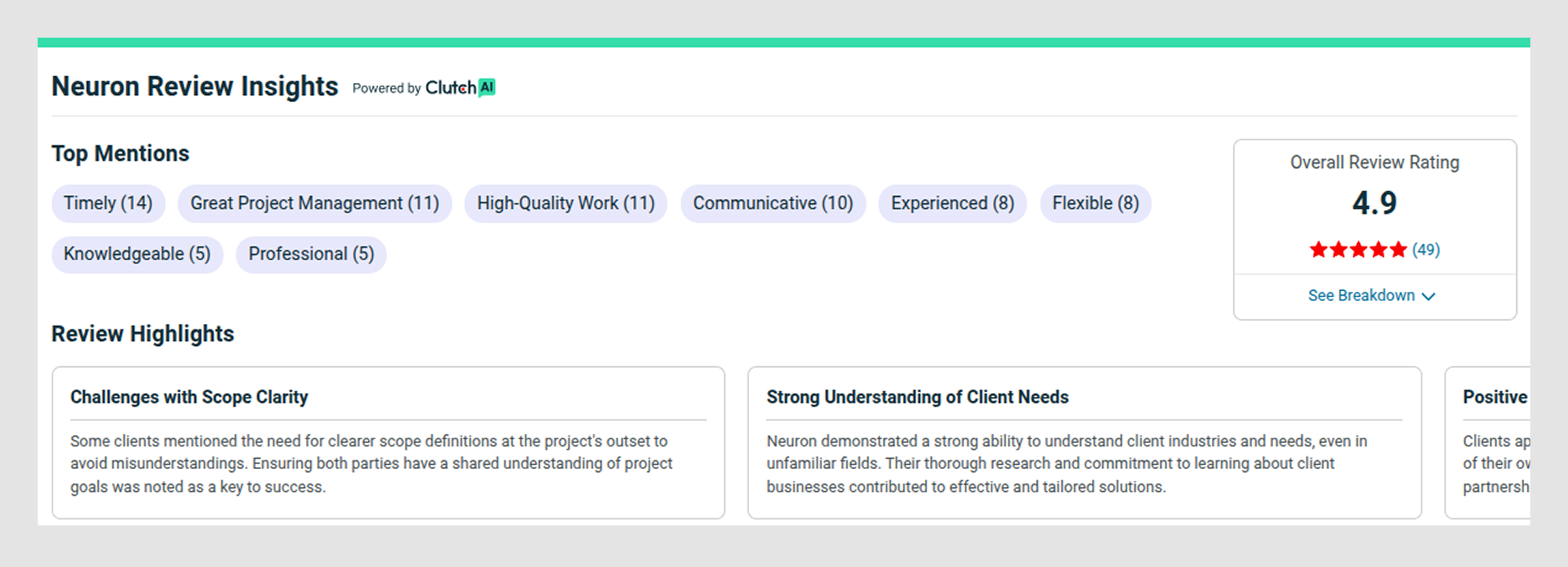
Past clients include Acuity, Vendr, and Jobble.
Neuron helps clients clarify their product vision and turn vague feature requests into a usable, scalable system. They felt like part of the team.

Strong points
✔️ Excellent at simplifying complex workflows.
✔️ Collaborative, no-fluff process.
✔️ Strong discovery and UX strategy capabilities.
Weak points
– Smaller team, may not scale well for multi-product portfolios.
What makes them different:
- Deep experience in B2B SaaS and enterprise UX.
- Strong founder involvement.
3. Clay
Best for high-visibility product design with premium branding polish

Clay is a high-end UX and branding agency based in San Francisco. They work with some of the world’s biggest companies, including Google, Coinbase, and Slack, delivering sleek, polished digital experiences at enterprise scale.
Clay operates as both a user interface design agency and a user experience agency in San Francisco, offering UI, branding, motion, and front-end development within a unified process. If you're looking for a premium, end-to-end design partner, this is the team Fortune 500s tend to call.
Services: UX/UI design, branding, design systems, front-end development, motion design
Budget fit: $100K–$500K+
Collaboration style: Full-service, cross-functional teams, highly structured process
Team size: 40+
Clay holds a 4.8-star rating on Clutch, with clients consistently noting their attention to detail, stunning visual work, and tight collaboration.
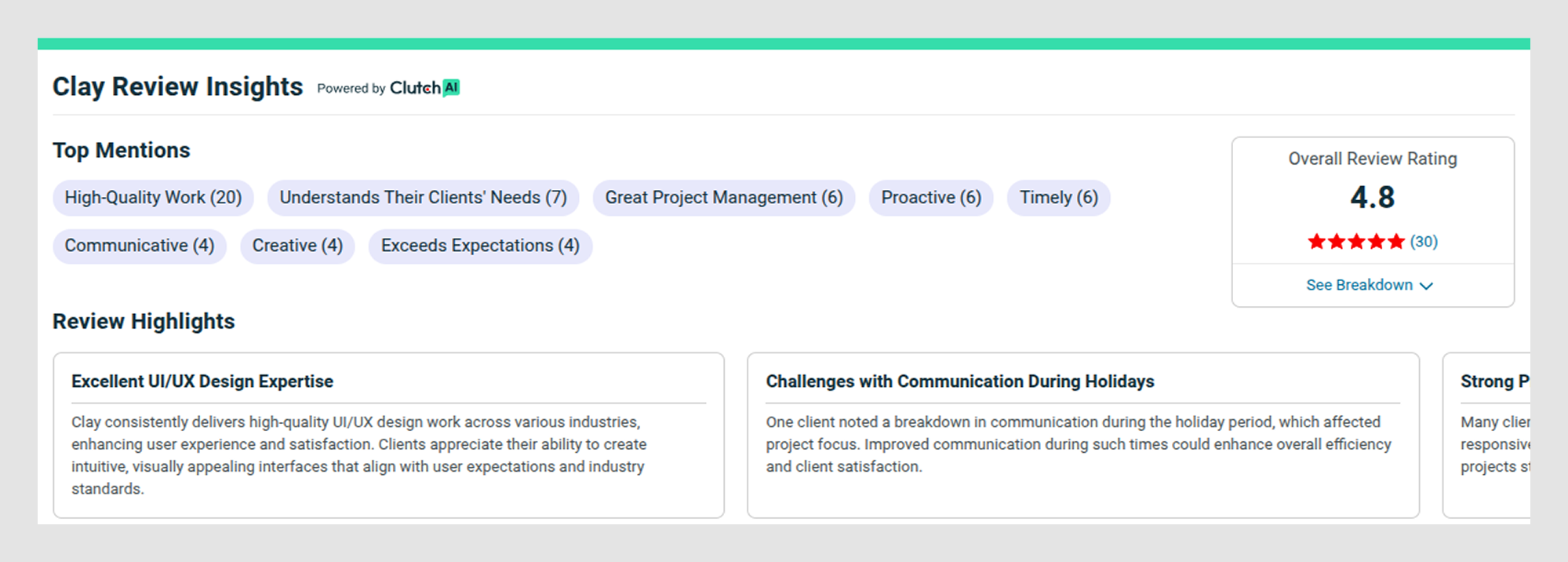
They’re not the fastest or cheapest, but they are one of the most polished.

Strong points
✔️ Pixel-perfect design with strong UX underpinnings.
✔️ Full-service offering from brand to front-end.
✔️ Highly experienced with enterprise-level clients.
Weak points
– Expensive and process-heavy, best suited for large, well-funded web projects.
– Less flexibility for fast pivots or lean startup teams.
What makes them different:
- Premium visual design paired with solid UX.
- Trusted by top tech brands and enterprise companies.
4. DesignMap
Best for complex enterprise UX and B2B software

DesignMap is a UX design firm in San Francisco that has been in operation for over 15 years, and it shows. They specialize in complex enterprise products and internal tools. Their sweet spot: simplifying dense workflows and modernizing legacy systems for companies that can't afford UX mistakes.
They’re not flashy and they don’t try to be. DesignMap focuses on research-backed UX that helps large teams align, scale, and ship confidently.
Services: UX/UI design, product strategy, enterprise UX, system redesigns
Budget fit: $50K–$200K+
Collaboration style: Structured, research-led, built for long-term partnerships
Team size: Mid-sized (exact numbers not public)
DesignMap doesn’t have a Clutch rating, but the company holds a 5-star rating on Google.

They have worked with clients like Salesforce, Docker, and Healthagen. Their clients value depth over speed and trust them to bring order to mission-critical systems.

Strong points
✔️ Specializes in enterprise UX and complex systems.
✔️ Strong focus on research and stakeholder alignment.
✔️ Trusted by major tech and finance clients.
Weak points
– Not ideal for early-stage startups or teams needing fast iteration.
– Visual design leans functional over flashy.
What makes them different:
- 15+ years of experience in enterprise software UX.
- Focus on solving hard, structural UX problems.
5. Momentum Design Lab
Best for data-heavy SaaS and enterprise UX with deep product thinking
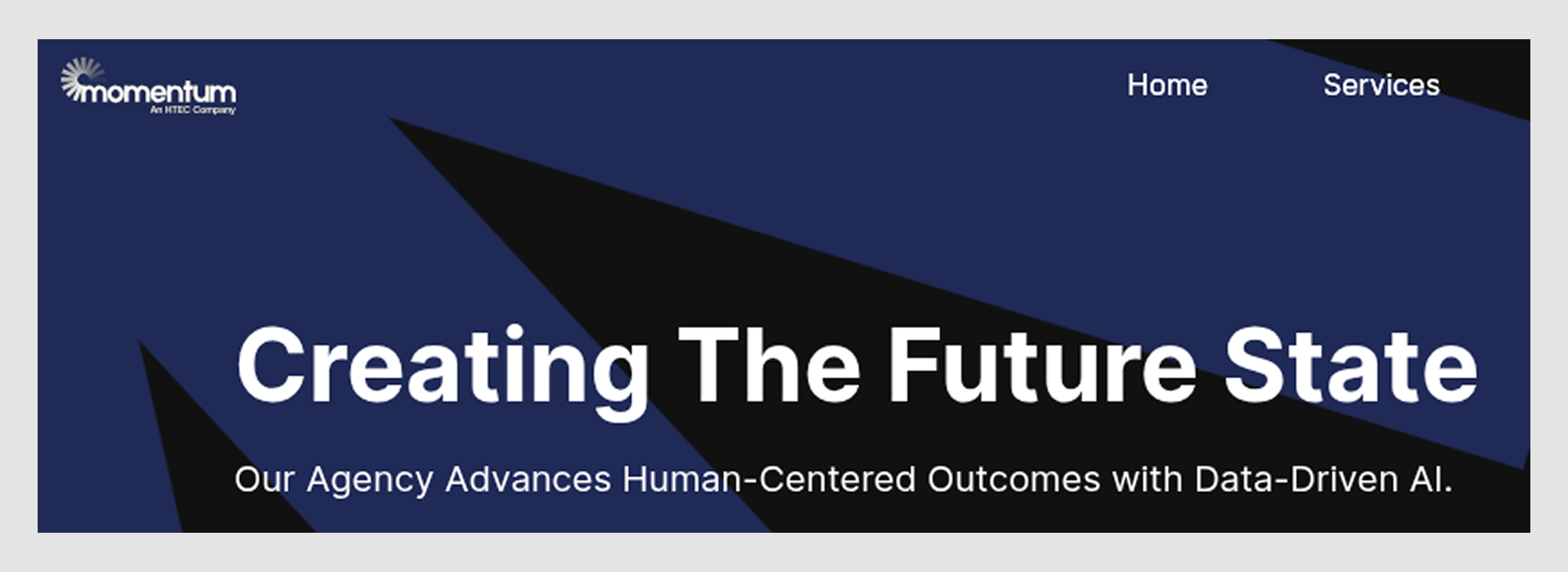
Momentum Design Lab is a global UX agency with a strong presence in San Francisco. They specialize in large-scale digital transformation projects for enterprise clients, blending design thinking with technical know-how to revamp complex systems.
Their focus goes beyond surface-level UI. They partner with organizations to rethink workflows, align stakeholders, and deliver scalable design systems across entire product ecosystems.
Services: UX strategy, enterprise UX/UI design, product innovation, digital transformation
Budget fit: $100K–$500K+
Collaboration style: Research-intensive, cross-functional teams, enterprise-focused
Team size: 50+ across multiple global offices
Momentum holds a 4.8-star Clutch rating and collaborates with companies such as Microsoft, P&G, and Verizon.
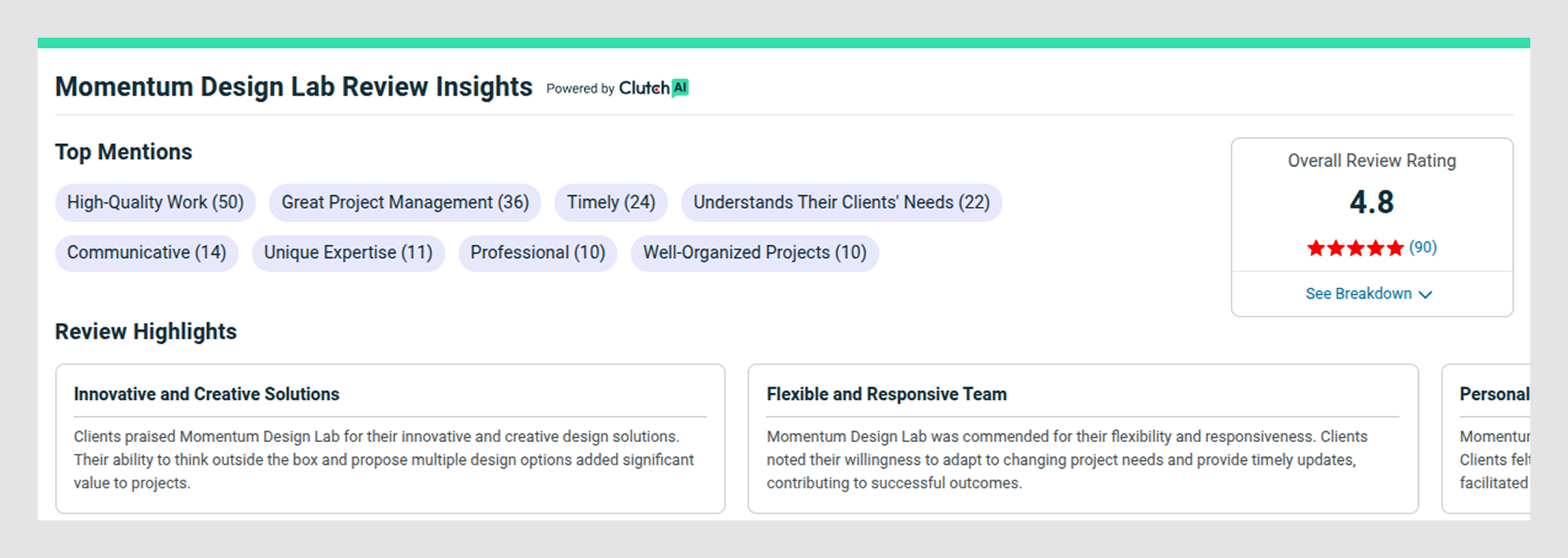
They’re known for handling complex challenges at scale and driving measurable impact through UX at a high standard.

Strong points
✔️ Deep experience with large-scale enterprise transformation.
✔️ Strategic UX that connects design with business outcomes.
✔️ Proven across industries like finance, healthcare, and tech.
Weak points
– Cost and scope may exceed what smaller teams or early-stage companies need.
– More structured process = less flexibility for rapid pivots.
What makes them different:
- Strong focus on product innovation and transformation.
- End-to-end UX support for enterprise teams.
6. Dworkz
Best for web and product design for startups and mid-market SaaS

Dworkz is one of the UI design firms, San Francisco that works with startups and growing SaaS companies to design intuitive digital products and sleek marketing sites. Their strength lies in balancing creativity with functionality, making them a solid choice for brands that want sharp design without the enterprise price tag.
They offer both product and web design, which makes them a good fit for early-stage teams looking to unify their product UX with their public-facing site.
Services: UX/UI design, product design, responsive websites, branding
Budget fit: $25K–$75K
Collaboration style: Flexible, hands-on, works well with startup teams
Team size: 30+
Dworkz has collaborated with companies such as Nokia, BPN, and Gett. They hold a 4.9-star Clutch rating.
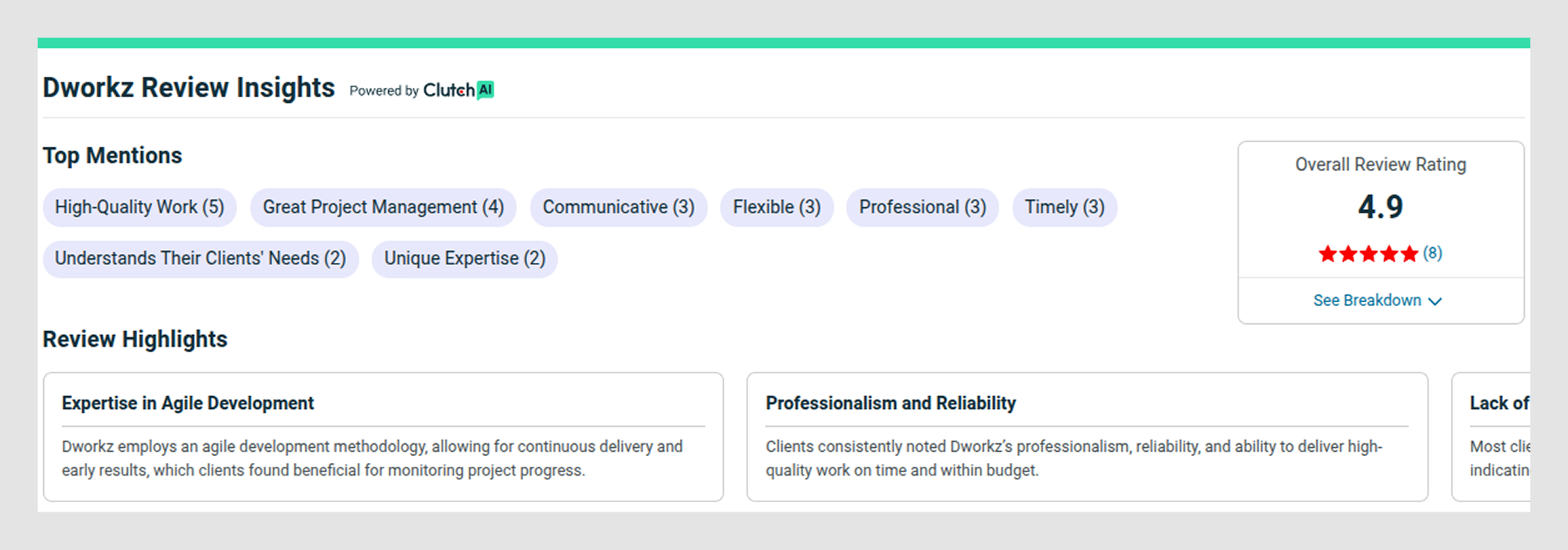
They are often praised for being easy to work with and for their ability to scale design efforts as clients grow. Their working approach is fresh, innovative, and professional.

Strong points
✔️ Solid design quality across both product and marketing surfaces.
✔️ Startup-friendly process and pricing.
✔️ Flexible team that adapts well to changing scopes.
Weak points
– Not a pure UX research agency, better suited for teams with product direction already in place.
– Less specialization in enterprise-scale systems.
What makes them different:
- Equal strength in product and web design.
- Affordable for funded startups needing quality design fast.
7. Portigal
Best for deep UX research and user insight

Portigal is a boutique UX research firm led by renowned author and researcher Steve Portigal. Based in the Bay Area, the agency specializes in uncovering deep user insights that inform product strategy, design decisions, and business innovation.
Unlike traditional user experience agencies, Portigal focuses exclusively on research and consultancy. If you’re building a new product or making big strategic bets, they help you reduce guesswork with real user data.
Services: UX research, stakeholder interviews, field studies, strategic insight
Budget fit: $25K–$200K (research only)
Collaboration style: Highly collaborative, consultative, project-based
Team size: Boutique (small, senior team)
Portigal Consulting doesn’t hold a Clutch rating but has worked with teams at prominent companies such as eBay, Sony, Microsoft, and Nokia. Their work is especially valued by product leaders making early-stage or high-impact decisions.
Strong points
✔️ Deep expertise in qualitative UX research.
✔️ Ideal for early-stage discovery or validating big changes.
✔️ Led by one of the most respected voices in UX research.
Weak points
– No design or implementation, research only.
– May be overkill for teams needing tactical or UI-focused help.
What makes them different:
- Research-only focus with no design upselling.
- Trusted by major tech companies for foundational insights.
8. Wunderdogs
Best for brand + UX design for mission-driven startups

Wunderdogs is a San Francisco-based agency combining brand strategy with UX design. They primarily work with early-stage startups and mission-driven companies that seek a strong, cohesive identity across their products and digital marketing.
If you're launching something new or repositioning a product, Wunderdogs helps clarify your message, build a bold brand, and design experiences that support both.
Services: Branding, UX/UI design, product strategy, web design
Budget fit: $30K–$150K
Collaboration style: Strategy-first, highly visual, collaborative
Team size: 30+
Wunderdogs holds a 4.9-star rating on Clutch and has worked with notable brands, including IBM, Providence, and EcoCart.

Clients appreciate their ability to translate abstract ideas into clear, compelling visual systems. They are easy to work with and well-organized.

Strong points
✔️ Strong alignment of brand and product UX.
✔️ Ideal for startups launching or rebranding.
✔️ Experienced with mission-driven and impact-focused teams.
Weak points
– Less suited for deep product UX or B2B SaaS dashboards.
– More brand-led than research-heavy.
What makes them different:
- Focus on connecting story, identity, and interface.
- Strong brand design paired with solid UX.
9. Ramotion
Best for startups that want branding and UX in one package

Ramotion is a San Francisco-based agency that blends branding and UX design for startups and tech companies. Their strength lies in crafting cohesive digital experiences, from logo to interface, with a consistent visual and functional identity.
They’re a great fit for companies looking to scale with a strong design foundation that covers both product and brand.
Services: UX/UI design, brand identity, web design, design systems
Budget fit: $30K–$100K+
Collaboration style: Design-led, collaborative, detail-focused
Team size: ~40 (SF-based with distributed team)
Ramotion holds a 4.9-star rating on Clutch and has worked with companies like Mozilla, Salesforce, and Netflix.
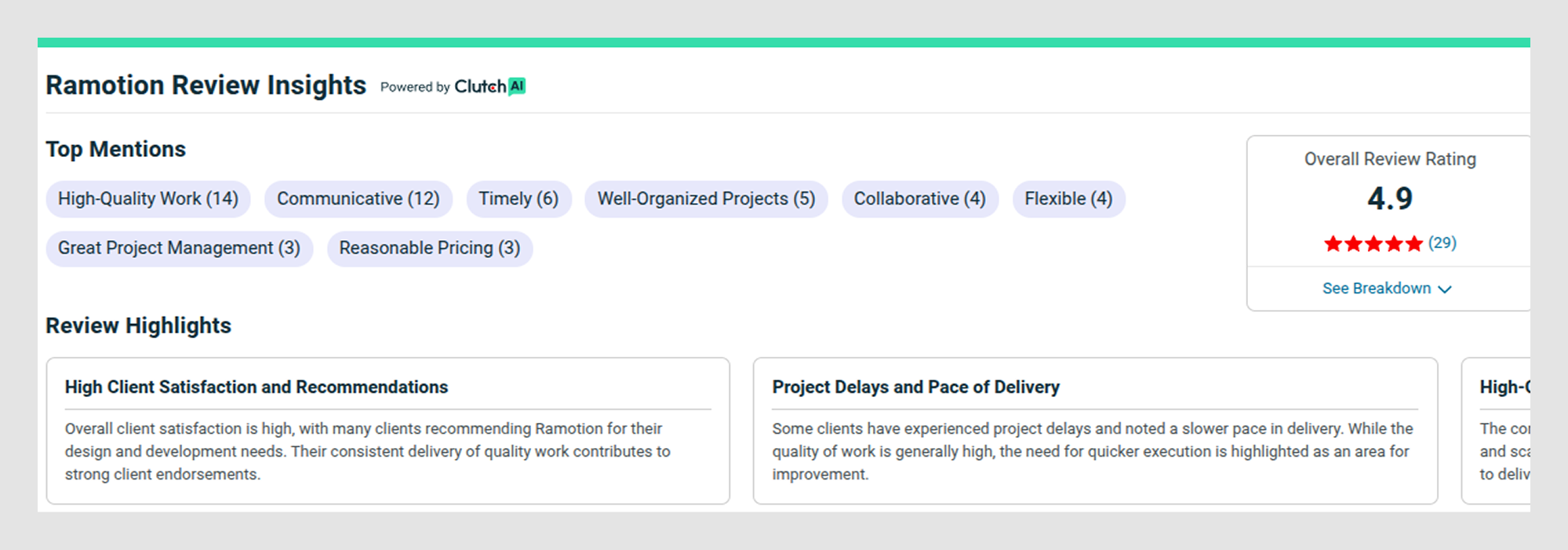
Clients highlight their attention to detail, flexibility, and ability to connect brand thinking and visual design to real product UX.

Strong points
✔️ Strong integration of brand and UX/UI design.
✔️ Trusted by top tech companies and fast-moving startups.
✔️ Excellent design systems and component-level consistency.
Weak points
– Not research-heavy, best for teams with product direction in place.
– Not a fit for enterprise UX or data-heavy tools.
What makes them different:
- Cohesive brand + product design under one roof.
- Sharp visual design backed by solid UX thinking.
10. Iron Creative
Best for startups and mid-size businesses on a budget
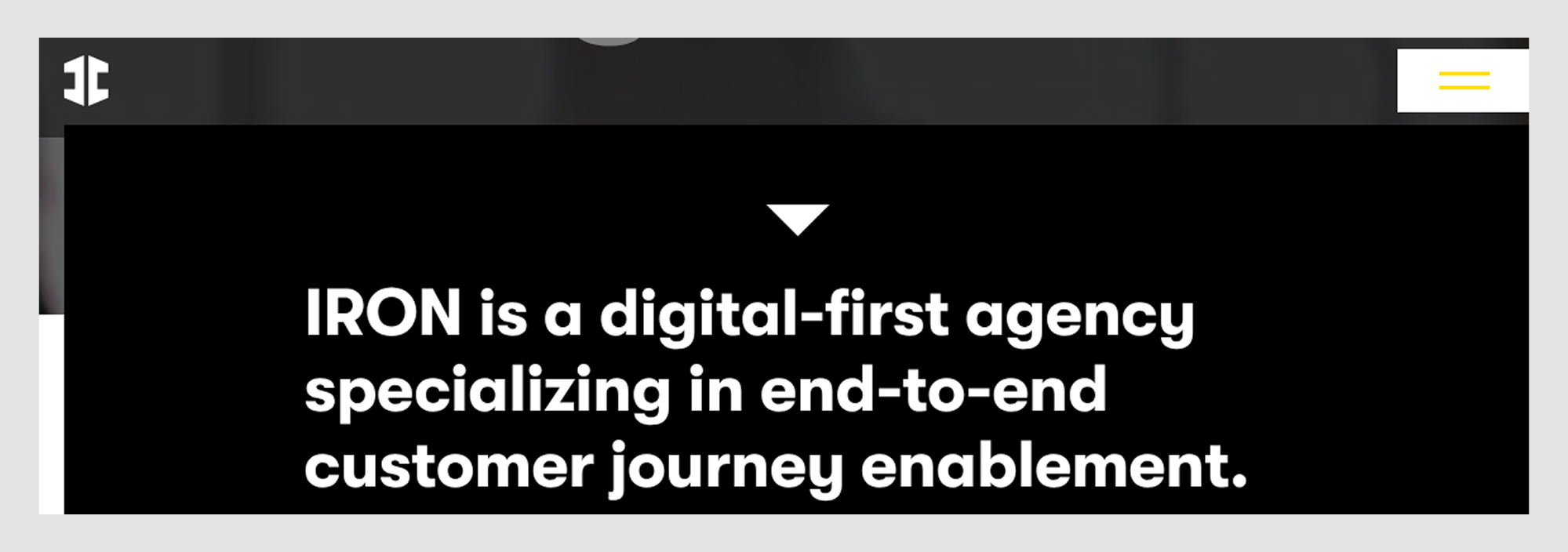
Iron Creative is a boutique digital agency based in San Francisco, offering UX/UI design, branding, and web development services to startups and mid-sized businesses. They’re known for delivering dependable design work at a reasonable price, without the overhead of larger product design agencies.
If you’re looking for straightforward, budget-conscious UX design with marketing expertise baked in, Iron Creative is a solid choice.
Services: UX/UI design, branding, web design, development
Budget fit: $10K–$30K
Collaboration style: Lean, responsive, hands-on
Team size: ~10–15
Iron Creative holds a 5-star rating on Clutch and has worked with brands like Fitbit, Salesforce, and Twilio.
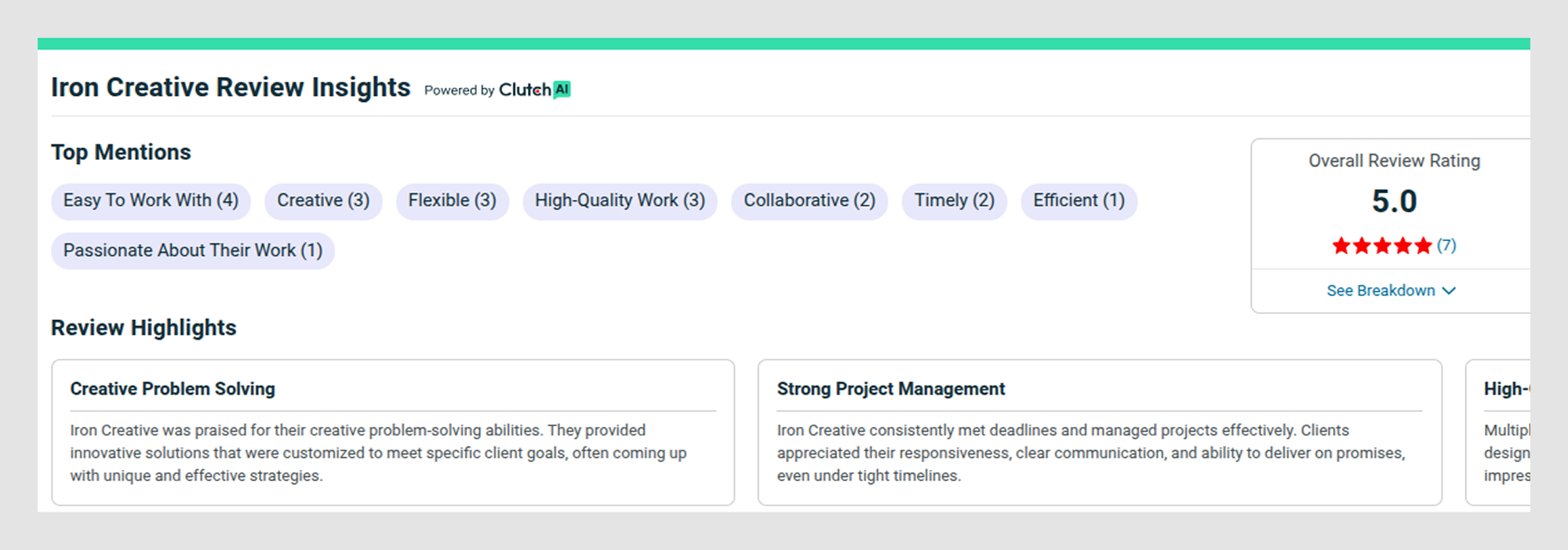
Clients appreciate their reliability, fast turnaround, cultural fit, and ability to deliver polished work without inflating costs.

Strong points
✔️ Affordable for startups and mid-market businesses.
✔️ Combines UX with branding and design-developer collaboration.
✔️ Trusted by big names despite boutique size.
Weak points
– Limited capacity for large-scale or highly complex products.
– Less specialized in SaaS or enterprise UX.
What makes them different:
- Balanced mix of UX, brand, and web expertise.
- More affordable than most SF-based agencies.
11. Baunfire
Best for visually polished marketing sites and digital branding
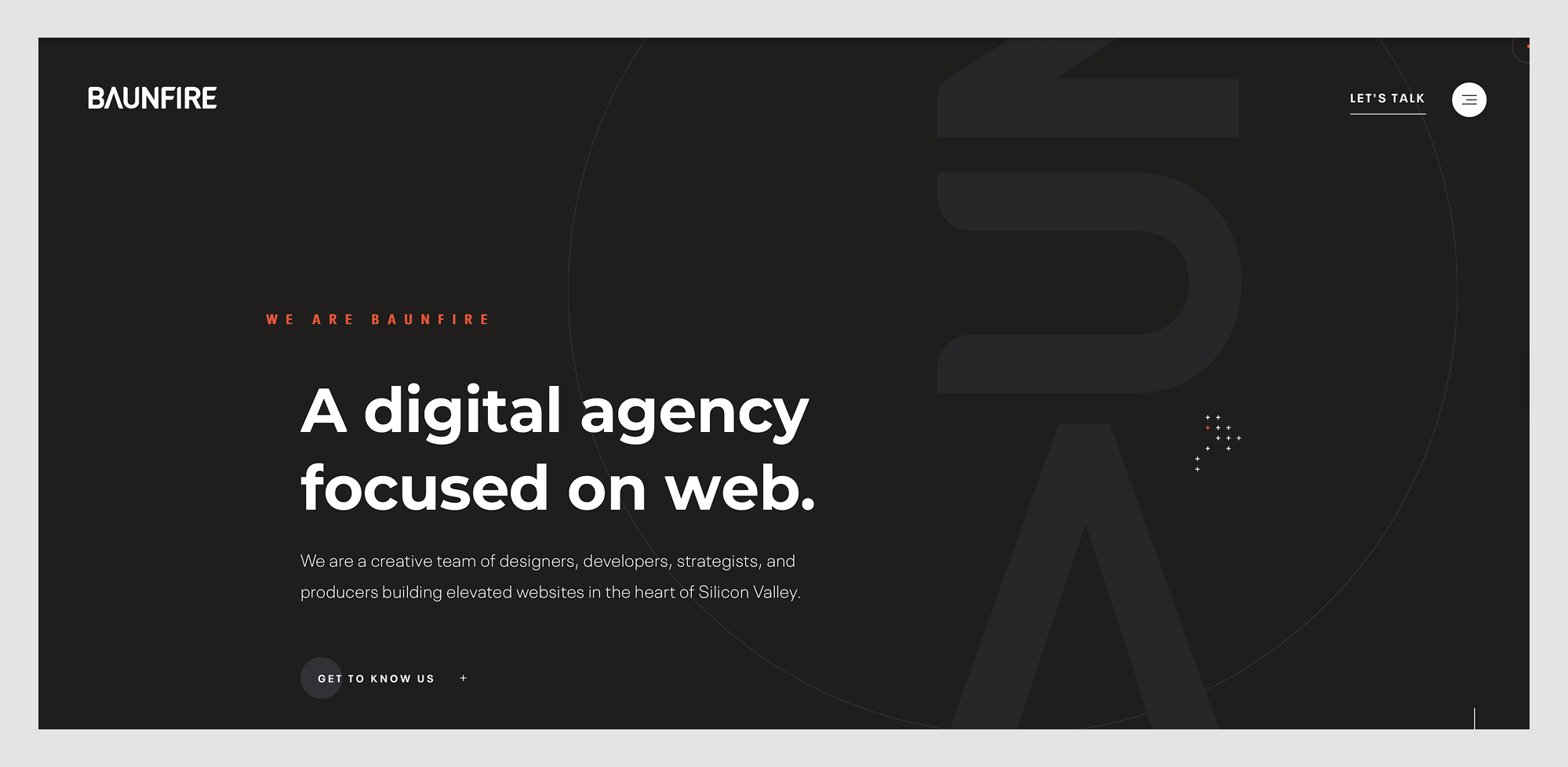
Baunfire is a Silicon Valley-based digital agency that specializes in high-end marketing websites for tech brands. Their work is visually striking, conversion-focused, and built to support fast-growing companies looking to stand out.
While they don’t focus on complex product UX, they excel at crafting branded web experiences that drive traffic, engagement, and leads, especially for SaaS and venture-backed startups.
Services: Web design, UX/UI for marketing sites, branding, front-end development
Budget fit: $25K–$100K+
Collaboration style: Design-driven, structured, agency-style team workflow
Team size: 20–30
Baunfire holds a 4.9-star rating on Clutch and has worked with the world's leading brands such as Google, Karat, and Instabase.
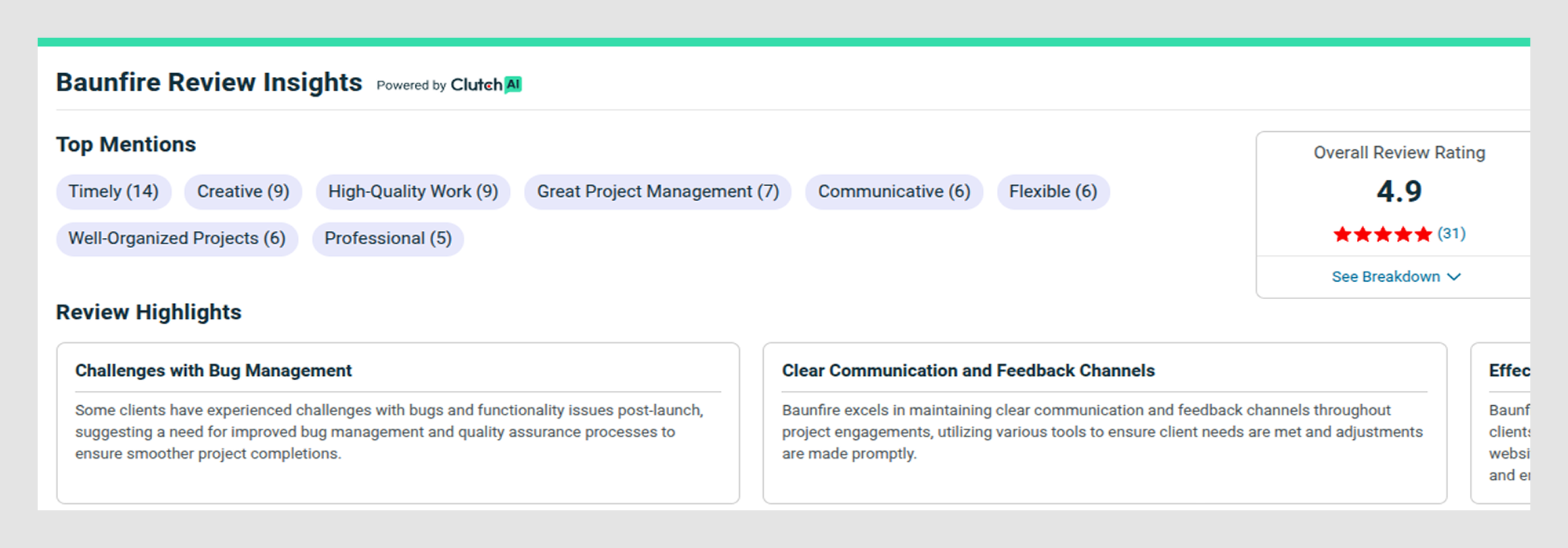
Clients praise their creative direction, visual polish, and ability to turn marketing goals into sleek, functional websites.

Strong points
✔️ Top-tier visual design for tech-focused websites.
✔️ Excellent for companies scaling brand and lead gen.
✔️ Combines design, branding, and front-end under one roof.
Weak points
– Not focused on product UX or app interfaces.
– Heavier on creative direction than UX research.
What makes them different:
- Sharp, conversion-optimized websites for tech brands.
- Strong creative leadership and design execution.
12. Eight25MEDIA
Best for mid-market B2B websites and lead-gen UX
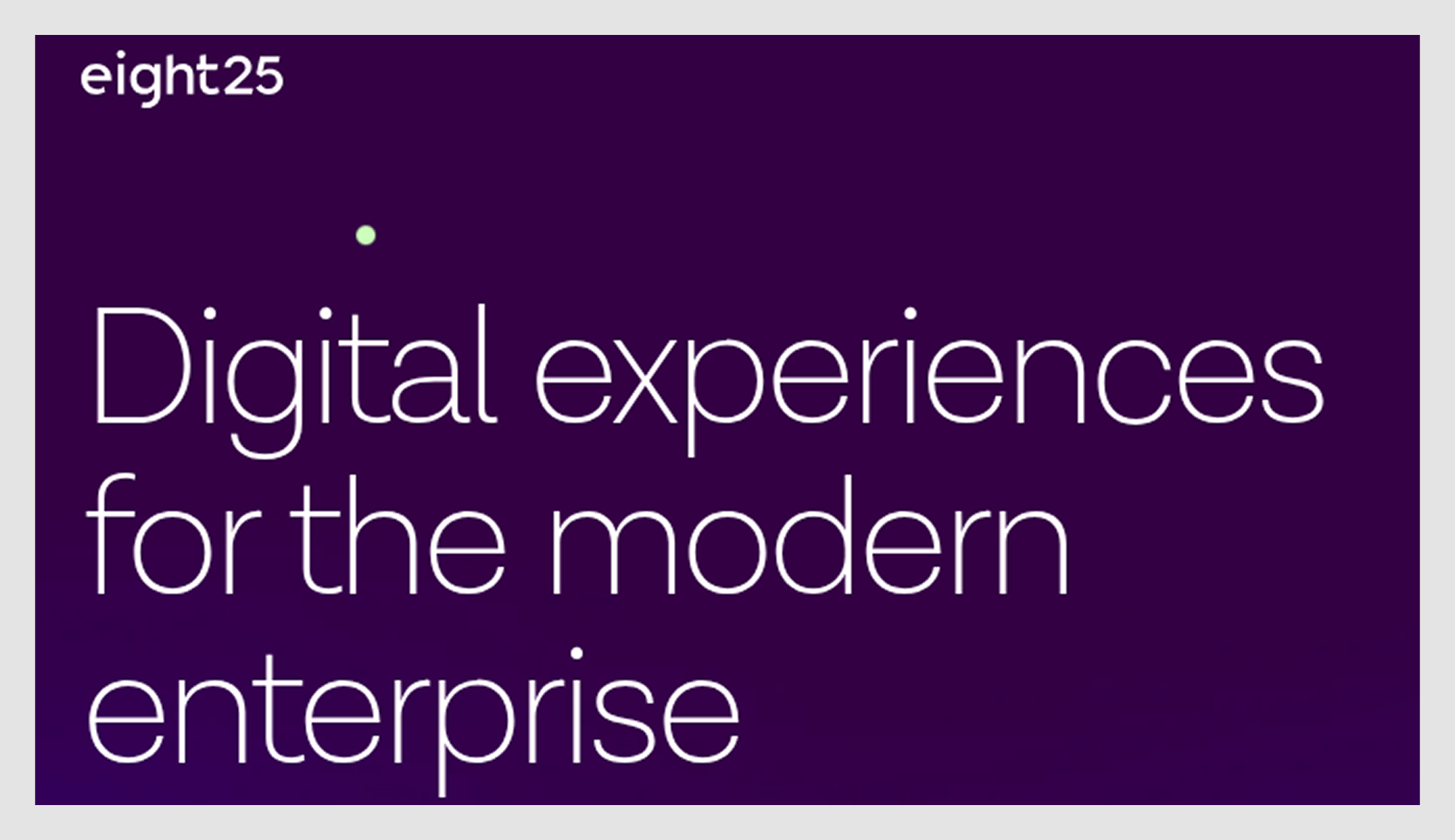
Eight25MEDIA is one of the largest web design agencies in the Bay Area, recognized for creating high-converting marketing websites for B2B and enterprise clients. Their focus is on performance, helping companies turn website traffic into leads and leads into revenue.
They combine UX/UI design with strategy, development, and CMS implementation, making them a strong fit for businesses that treat their website as a core growth tool.
Services: Web design, UX/UI, digital strategy, CMS development
Budget fit: $30K–$100K+
Collaboration style: Structured agency process, strategy-led, in-house development team
Team size: 70+
Eight25MEDIA holds a 4.9-star Clutch rating and has worked with brands like WeWork, SoftBank, and Datavant.
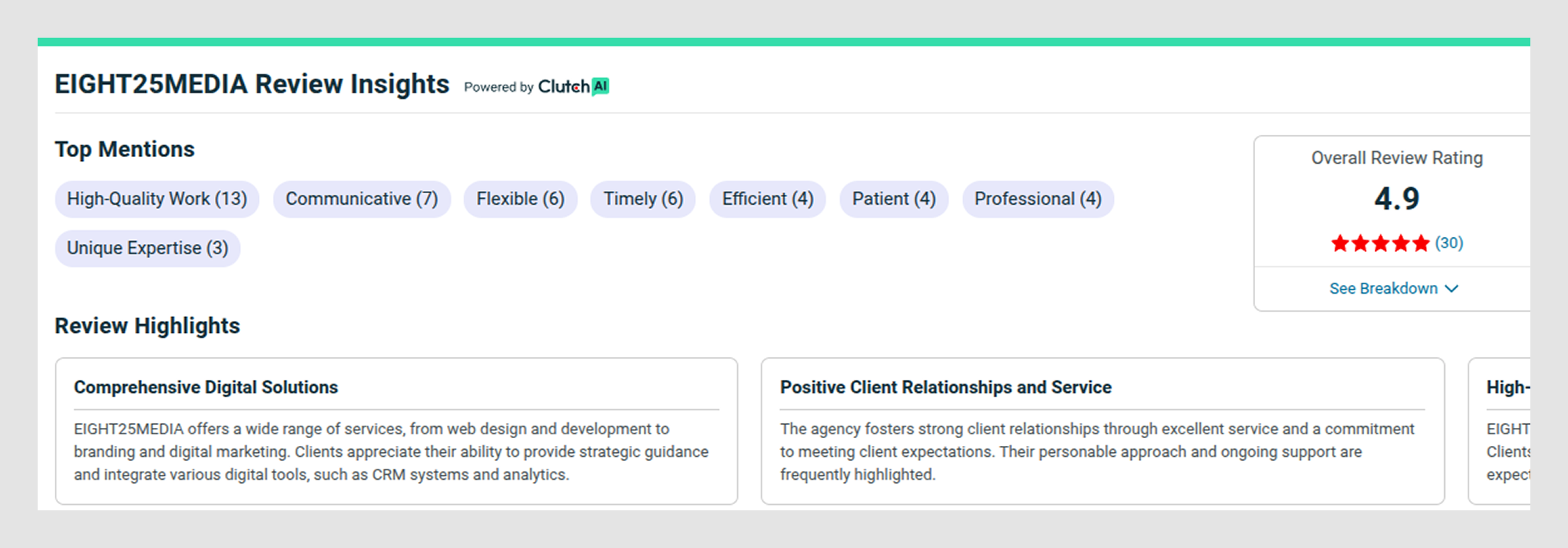
Clients highlight their ability to translate business goals into beautiful, high-performance sites, fast.

Strong points
✔️ Results-driven design for B2B and enterprise websites.
✔️ Full-service agency with in-house strategy and dev.
✔️ Ideal for teams focused on lead gen and measurable growth.
Weak points
– Not specialized in product UX or SaaS interface design.
– More suited for marketing teams than product teams.
What makes them different:
- Strong focus on business outcomes and CRO.
- Scalable agency structure with dev and CMS support.
Top UX agencies comparison by category and budget
If you don’t want to scroll through a dozen mini-reviews, here’s a quick overview of the top UX design agencies in San Francisco, organized by what they do best, plus what to keep in mind when choosing between different types of design agencies or when you’re ready to hire a designer.
Price breakdown: How much will a UI/UX design agency in SF cost?
If you’re wondering why no agency lists prices clearly on their site… you’re not alone.
And yes, it’s annoying.
Pricing for UX design can feel like a black box, partly because every project is different, and partly because “design” can mean anything from a quick UI polish to a full-blown product UX strategy sprint with embedded research and dev handoff.
But we’ve combed through Clutch data, agency quotes, and insider experience to give you a ballpark of what you can expect in San Francisco:
Typical design project price ranges (based on scope)

What drives the cost?
Several key factors influence the UX agency pricing. Here’s what matters most:
- Scope and complexity.
A 5-page marketing site is not the same as a multi-user SaaS dashboard with custom onboarding flows. More flows = more time.
- Seniority of the team.
Senior designers cost more, and they're worth it when you’re moving fast and can’t afford rookie mistakes.
- How integrated the team is.
Leading UX design agencies that embed into your product workflow (standups, sprints, Figma comments flying at midnight) cost more than hands-off vendors. You're buying collaboration, not just screens.
- Discovery and research
If an agency offers UX without research, you’re getting decoration, not design. Research adds cost but often prevents expensive product mistakes later.
Now that you know what pricing looks like, let’s talk about how to choose the right UX designer agency, San Francisco for your business goals, without getting dazzled by the wrong details.
How to choose the right agency for your business needs
With so many polished portfolios and big claims, choosing the right UX agency, San Francisco takes more than scrolling through Dribbble shots. Here’s how to focus on what matters and avoid costly surprises.
1. Define your goals (before you define your agency)
What are you hiring for? Are you fixing a clunky dashboard? Launching a new product? Refreshing your brand?
Start by understanding what is UX design in your context, whether it’s interface aesthetics, usability, or conversion improvement.
Then let your goal guide the type of team you hire:
- Need help with product UX? Look at Neuron or Eleken.
- Want a strong brand, website redesign project plan, + UX alignment? Try Ramotion or Wunderdogs.
- Tackling a full enterprise redesign? You’ll need a heavyweight like Clay or Momentum.
This is also a great moment to weigh in-house designer vs agency: do you need long-term product knowledge or fast external expertise?
2. Match your budget to your stage
Early-stage startup? Skip the 12-person discovery team.
- Go lean with Eleken (subscription-based) or Iron Creative if you’re bootstrapping.
- Mid-stage and up? Agencies like DesignMap or Baunfire bring more structure — and higher price tags.
Still unsure how to hire UX designers that match your budget and process? Ask about pricing models, team structure, and what kind of ROI you can expect.
3. Ask the right questions early
Before you sign, vet the agency’s design process:
- Can I meet the people doing the work?
- What happens when the scope shifts?
- How do you define and measure success?
If the answers are vague or overly polished, that’s a red flag. Ask for UX ROI case studies to see how their work translates into real business outcomes, not just good-looking screens.
4. Go local when time zones matter
If your product team is in SF, there’s real value in working with someone in the same time zone.
You can hop on calls. You can iterate faster. And you avoid the back-and-forth lag that happens when your designer logs in after your dev team logs off.
5. Don’t let “local” be a dealbreaker
If time zones matter for your team, SF-based agencies offer speed and access. But don’t overlook remote teams. You can consider a UX design agency, New York, or remote agencies like Eleken that work async and embed in-house designers, often with more flexibility and better pricing.
6. Look past the pixels
Pretty UIs are easy to fake. What you want is a team that gets product thinking. So, you need to evaluate UX designers:
- Do they talk to users?
- Do they run usability tests?
- Can they explain the “why” behind their designs?
Strong agencies design for outcomes, not just aesthetics. Look for teams that design for simplicity, focus on solving problems, and prioritize usability over visual fluff.
Even great-looking agencies can hide weak spots. Watch out for these red flags:
✖️ Case studies with no metrics (just pretty mockups).
✖️ Proposals that copy-paste generic process steps.
✖️No mention of research or user feedback.
✖️ No access to the actual designers you'll work with.
Once you’ve narrowed the field, it’s not just about who looks best on paper. It’s about who will move your product forward.
Good design isn’t cheap, but bad design is expensive
A good UX agency will challenge your assumptions, simplify your product, and speed up your roadmap. A bad one will burn your budget with nice-looking screens that don’t convert.
If you’ve made it this far, congrats. You now know more about San Francisco UX and user interface design agencies than most founders do before they sign a contract.
You’ve seen:
- Who’s best for SaaS, enterprise, research, or visual storytelling.
- What typical projects cost (and why).
- How to filter the flash from the real value.
- What makes teams like Eleken different, and where do they fit in.
The point isn’t to crown a “best agency.” It’s designed to help you choose the right fit for your product, team, and budget.
And if you're leaning toward flexible, fast-moving user experience design that doesn’t require an SF-sized budget, you might want to test-drive Eleken. You can start with a free 3-day trial with real design work. Contact us and we’ll let the Figma files do the talking.
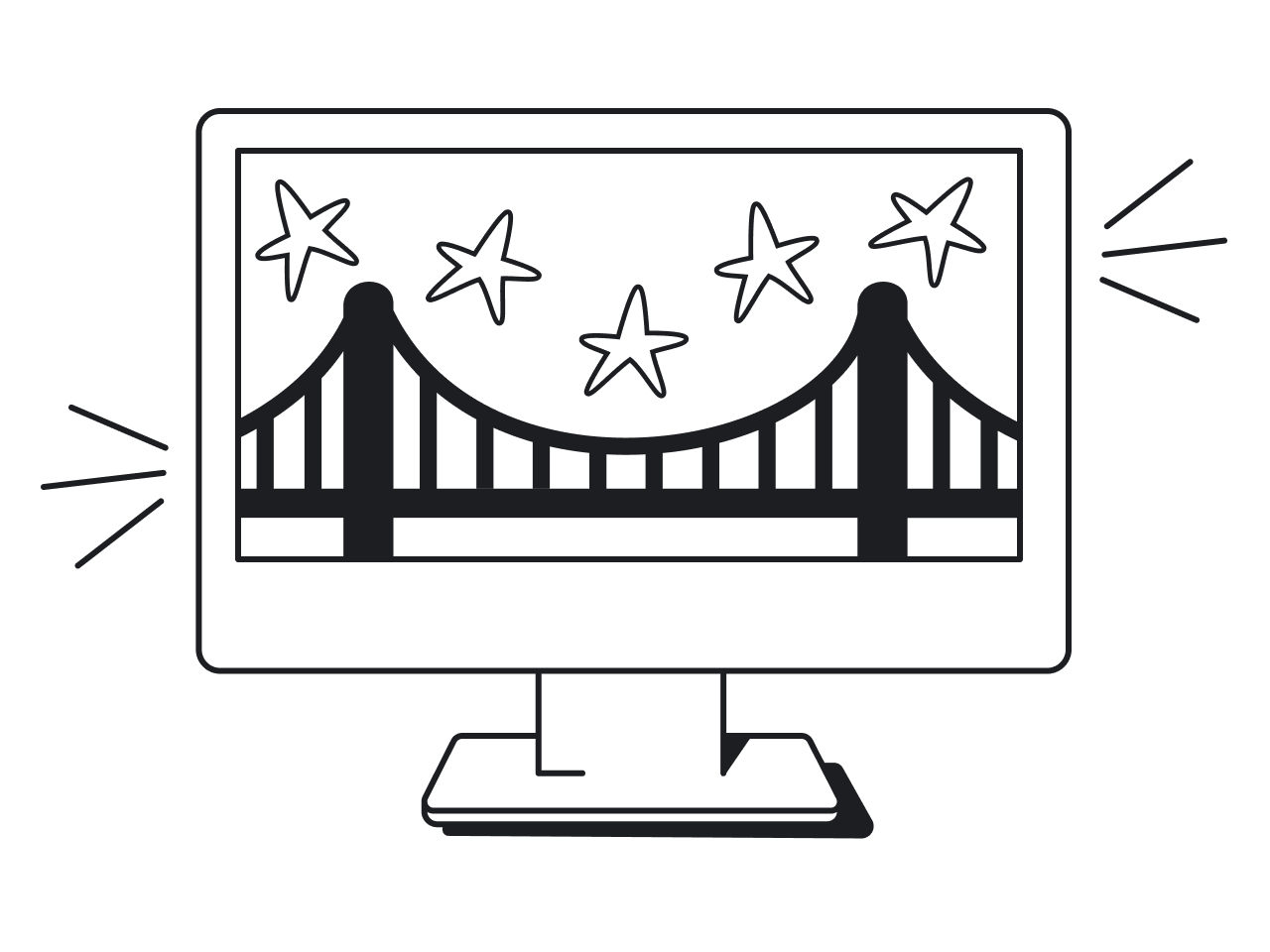





.webp)


.png)


